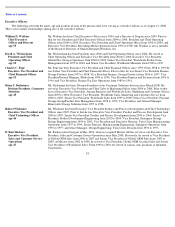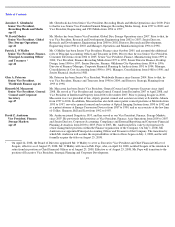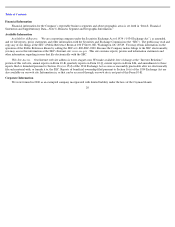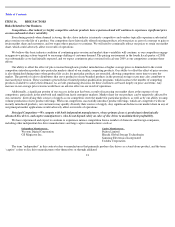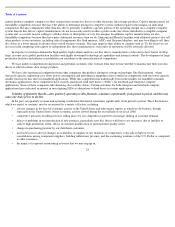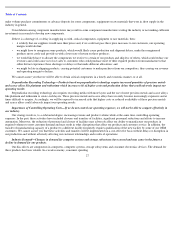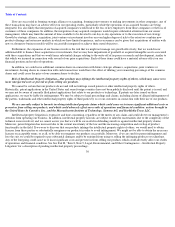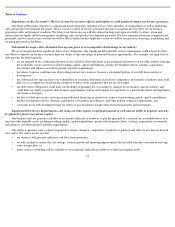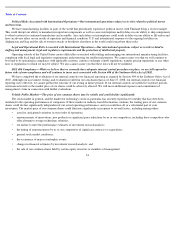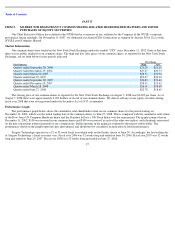Seagate 2007 Annual Report Download - page 28
Download and view the complete annual report
Please find page 28 of the 2007 Seagate annual report below. You can navigate through the pages in the report by either clicking on the pages listed below, or by using the keyword search tool below to find specific information within the annual report.
Table of Contents
make volume purchase commitments or advance deposits for some components, equipment or raw materials that were in short supply in the
industry in general.
Consolidation among component manufacturers may result in some component manufacturers exiting the industry or not making sufficient
investments in research to develop new components.
If there is a shortage of, or delay in supplying us with, critical components, equipment or raw materials, then:
•
it is likely that our suppliers would raise their prices and, if we could not pass these price increases to our customers, our operating
margin would decline;
•
we might have to reengineer some products, which would likely cause production and shipment delays, make the reengineered
products more costly and provide us with a lower rate of return on these products;
•
we would likely have to allocate the components we receive to certain of our products and ship less of others, which could reduce our
revenues and could cause us to lose sales to customers who could purchase more of their required products from manufacturers that
either did not experience these shortages or delays or that made different allocations; and
We cannot assure you that we will be able to obtain critical components in a timely and economic manner, or at all.
Perpendicular Recording Technology—Products based on perpendicular technology require increased quantities of precious metals
and scarce alloys like platinum and ruthenium which increases risk of higher costs and production delays that could adversely impact our
operating results.
•
we might be late in shipping products, causing potential customers to make purchases from our competitors, thus causing our revenue
and operating margin to decline.
Perpendicular recording technology also requires recording media with more layers and the use of more precious metals and scarce alloys
like platinum and ruthenium to create such layers. These precious metals and scarce alloys have recently become increasingly expensive and at
times difficult to acquire. Accordingly, we will be exposed to increased risks that higher costs or reduced availability of these precious metals
and scarce alloys could adversely impact our operating results.
Importance of Controlling Operating Costs—If we do not control our operating expenses, we will not be able to compete effectively in
our industry.
Our strategy involves, to a substantial degree, increasing revenue and product volume while at the same time controlling operating
expenses. In the past, these activities have included closures and transfers of facilities, significant personnel reductions and efforts to increase
automation. Moreover, the reduction of personnel and closure of facilities may adversely affect our ability to manufacture our products in
required volumes to meet customer demand and may result in other disruptions that affect our products and customer service. In addition, the
transfer of manufacturing capacity of a product to a different facility frequently requires qualification of the new facility by some of our OEM
customers. We cannot assure you that these activities and transfers will be implemented on a cost-effective basis without delays or disruption in
our production and without adversely affecting our customer relationships and results of operations.
Industry Demand—Changes in demand for computer systems and storage subsystems have caused and may cause in the future a
decline in demand for our products.
Our disc drives are components in computers, computer systems, storage subsystems and consumer electronics devices. The demand for
these products has been volatile. In a weak economy, consumer spending
27



